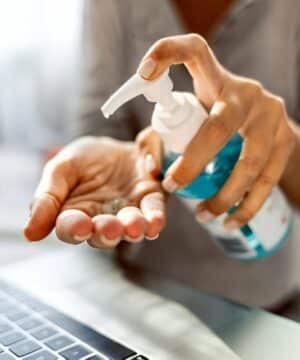A soap safety assessment is a detailed safety assessment of a soap product. This assessment is conducted to ensure the safety of a soap product before it is placed on the market. A qualified safety assessor performs this assessment based on the product dossier containing all required information and documentation about the soap provided by the manufacturer. This file is called a Cosmetic Product Information File (PIF).
What is a Cosmetic Product Information File (PIF) for soap?
The Cosmetic Product Information File (PIF) is a comprehensive collection of documentation required for any soap. The PIF can be divided into three parts:
Part I: Identification of manufacturer, responsible person, production site
Contains information about the manufacturer and production site, including GMP certification.
Part II: Information about the soap product
Contains soap information including composition, raw material documentation, finished product specifications, test results, labeling and packaging.
- The composition of the soap
- Production method
- Product identification (lot or batch no./barcode no./production code etc.).
- Documentation of the raw materials used in the soap (TDS, MSDS, CoA, etc.)
- Specifications of the finished product (this includes physical (such as appearance, color, texture and odor), chemical (concentration of active ingredients, pH, viscosity, density, etc.) and microbiological (limits for bacteria, fungi and other microorganisms) characteristics) (TDS, CoA, MSDS)
- Laboratory test results (shelf life and compatibility test)
- Packaging Specifications
- Labeling
- Claims
- If there is an undesirable effect / serious undesirable effect, the relevant documents
Part III: Cosmetic product safety report (CPSR) for soap
The CPSR consists of two main parts: Part A and Part B.
Part A – Soap Safety Information: Summarizes all PIF elements listed above and provides product information.
Part B – Cosmetic Product Safety Assessment: Contains the safety assessor’s conclusions, warnings and justifications that ensure the product is safe under normal use.
- In-depth formula analysis
- Analysis of the composition of your soap, including active ingredients, fragrances and preservatives.
- Assessment of the concentration of each ingredient to ensure it is within safe limits.
- Checking ingredients
- Check that all ingredients are permitted according to the Cosmetics Regulation (EC) No. 1223/2009.
- Control of source and purity of raw materials.
- Odor Analysis (IFRA) Evaluation of odors according to IFRA standards and the latest allergen regulations.
- Analysis of laboratory test results
- All necessary analysis and documentation to demonstrate the safety of the product.
- Toxicological evaluation
- Assessment of toxicological profiles of the substances used in the soap.
- Risk assessment and hazard identification
- Assessment of potential risks based on the proposed application and target population (e.g., baby soap or soap for sensitive skin).
What products can be assessed with this soap safety assessment?
This assessment is intended for soaps that require only 1 laboratory test, namely only the stability test.
| Soap type | Why only Stability Test? |
|---|---|
| Cold Process Zeep | High pH (>10) inhibits microbial growth. |
| Hot Process Soap | High pH (>10) inhibits microbial growth. |
| Casting soap (Melt & Pour) | After curing, the soap contains no free water, which prevents microbial growth. |
| Lye-based soaps | These soaps have a high pH and do not contain free water. |
| Soap with high pH (>10) | Products with high pH are hostile to microorganisms. |
High pH levels ensure that there is minimal microbial risk. You can measure this with a digital pH meter or pH test strips.
These products are only exempt from routine microbiological testing (required for each batch) and challenge testing requirements. Nevertheless, the initial physical, chemical and microbiological specifications of your product must still be submitted to the safety reviewer. If you do not have physical, chemical and microbiological specifications for the finished product, we strongly recommend purchasing the Product Specification Report and Microbiological Testing Laboratory.
When are other tests required for soap?
Other tests such as microbiological tests or challenge tests are required only if the soap:
- Has a low pH (below pH 10).
- Contains extra water (for example, in liquid soap).
- Contains ingredients susceptible to microbial contamination (such as milk or fresh plant extracts).
What laboratory tests are required?
For a cosmetic safety assessment for soap, the following laboratory test is essential to comply with European regulations and ensure the safety of the product:
Stability test
- Purpose: Determines whether the soap remains stable under normal and extreme conditions, such as heat, cold and exposure to light. This involves monitoring changes in texture, color, odor and action.
- Important for: Ensuring the shelf life and safety of the soap over its lifetime.
- How is this tested: Storage of soap at different temperatures for a specified time.
What is a variation?
You can often create multiple product variations just by changing the scent or color of a basic formulation. By choosing the option variant in these specific cases, you benefit from lower costs while ensuring that your product variations continue to meet cosmetic safety regulations. For each variation, we create the PIF with CPSR and do a laboratory test. For 2 variants, we then make 2 PIF with CPSR and do 2 laboratory tests.
When do you choose the option variant?
- Change scent: If the only change in the base formulation is a change in fragrance, you can choose the variant option. This is because the base formulation remains the same and only the fragrance is changed.
- Color change: Similarly, if you choose to change the color of the product without introducing new ingredients or raw materials, this also qualifies for the variant award.
Example 1
Variant 1 soap ingredients:
- 96% soap base white
- 2% Aloe vera powder
- Fragrance oil – 2% Lavender essential oil
Variant 2 with modified odor:
- 96% soap base white
- 2% Aloe vera powder
- New fragrance oil – 2% Citrus essential oil
Variant 3 with modified odor:
- 96% soap base white
- 2% Aloe vera powder
- New fragrance oil – 2% Ylang Ylang essential oil
These variants keep the same basic ingredients, but change the scent from lavender to citrus and Ylang Ylang. Since the composition remains unchanged apart from the fragrance, select the 3 variant option.
Example 2
Variant 1 soap ingredients:
- 20% Water
- 10% Sodium hydroxide
- 16% Olive oil
- 10% Palm oil
- 10% Rice bran oil
- 16% Coconut oil
- 12% Laurel oil
- 3% Fragrance Oil
- Color- 1% Mica forest green
- Color- 1% Mica blue
- Color- 1% Mica orange
Variant 2 with modified color:
- 20% Water
- 10% Sodium hydroxide
- 16% Olive oil
- 10% Palm oil
- 10% Rice bran oil
- 16% Coconut oil
- 12% Laurel oil
- 3% Fragrance Oil
- New color- 1% Mica gold yellow
- New color- 1% Mica black
- New color- 1% Mica white
This variant retains the same basic ingredients, but only changes the colors. Since the composition remains unchanged apart from the colors, select the 2 variant option.
Important reminder: If additional raw materials are added (such as a new active ingredient, plant extract, preservatives or any other ingredient that changes the formulation), this is not counted as a variant, but a separate CPSR is required because of the significant change the new formulation represents.
How does the process work?
- Choosing Assessment
- You purchase the assessment through our website.
- Access to secure Portal
- After purchase, you will gain access to our secure portal where you can complete the intake.
- Complete Intake
- Complete all requested information about your product and upload relevant documentation.
- Send Samples
- Send physical samples of your product to our laboratory. We’ll tell you exactly what we need to do this.
- Laboratory tests
- We perform stability test and compatibility test.
- Safety Assessment
- Our safety reviewer prepares the PIF, Part I, II and III.
- EU CPNP notification and documentation delivery
- We will take care of the registration of your product in the Cosmetic Products Notification Portal (CPNP) and you will receive the complete PIF documentation from us.
What do you need to apply for a CPSR?
To make the process go smoothly, we need the following information from you:
- Product Formulation: A complete list of ingredients, including concentrations and INCI names.
- Product packaging: Information on packaging and labels.
- Instructions for use: How the product is used by consumers.
- Sample: A physical sample of your product for laboratory analysis.
- Documentation: Certificates of raw materials (e.g., MSDS and COA).
For whom is this service intended?
Our soap safety assessment is specially designed for:
- Soap producers who want to sell their products in the EU.
- Small business owners offering handmade soap.
- Large companies looking to launch a wide range of soaps.
- DIY makers who want to professionalize their creations.
Why to choose our safety assessment for soap choose?
- Experienced Safety Assessors: Our safety assessments are conducted by certified professionals with years of experience in the cosmetics industry.
- Quick Turnaround Time: We deliver the CPSR within 10 to 15 business days of receiving all required data.
- Clear Communication: No jargon, but clear explanations throughout the process.
- Customized Recommendations: We provide practical recommendations if your product needs customization.
- Fully Compliance-Focused: Our reports are 100% compliant with European regulatory requirements.
Frequently Asked Questions
- How long is a CPSR valid? A CPSR remains valid as long as the product formulation and other relevant aspects remain unchanged.
- Can I make changes to my product after the CPSR? Yes, but then the CPSR must be revised to ensure that the changes do not affect safety.
- Are there any products that do not require CPSR? No, all soaps sold within the EU must have a CPSR.
- How do I know if my ingredients are allowed? We help you do this by checking all ingredients based on the latest regulations.
- Can I use ingredients from suppliers other than YouWish? Yes, that’s no problem at all. As long as you have documentation, we can do a safety assessment for you,








Reviews
There are no reviews yet.